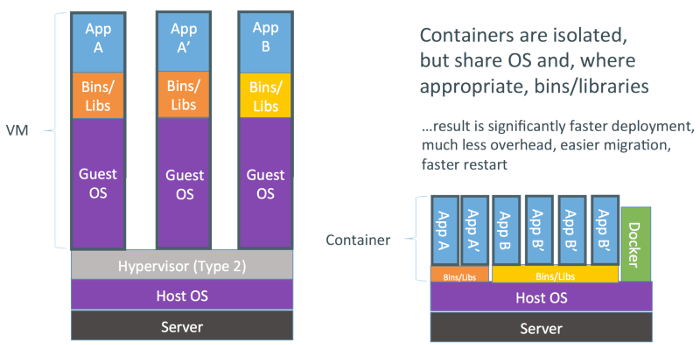While the concept of container technology isn't new, the rise of Docker's popularity is simply because it was the first to bring simplicity and scalability to the market. For those who don't quite understand what Docker is, on a simplistic level, it's just an application container.
Containers themselves are simply another way of virtualizing your environment. Rather than having to emulate components such as a Virtual Machine (VM), containers run on a single kernel and rely on software-level abstraction and isolation to provide lightweight and faster virtual environments. Docker takes this a step further and isolates it right down to a single application, as shown in the following diagram:

The advantage is that this high level of abstraction means that you can provide a highly consistent and rapidly deployable service architecture that is simple...



